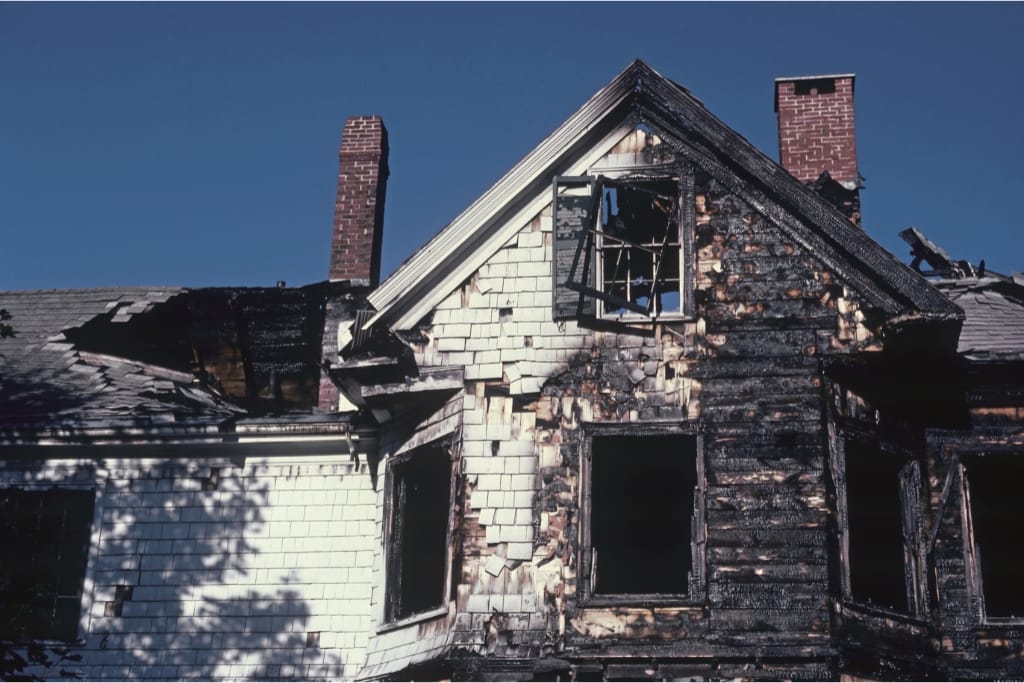Wildfires can leave a lasting impact, resulting in significant destruction and emotional strain for those affected.
Rebuilding after such a disaster requires careful planning and resilience. From managing the complexities of insurance claims to selecting trustworthy contractors, every step plays a crucial role in the recovery process.
With the right strategies in place, you can effectively transition from the ashes of loss to a renewed sense of hope and community, regaining a sense of normalcy and stability in your life.
1)) Contact Your Insurance Company
The first step after a wildfire is to contact your insurance company and file a claim. Make sure to document all damages and losses with photos and videos to support your claim.
Tips for Navigating Your Insurance Claim:
- Be Prepared with Documentation: Gather all relevant documents, including your policy details, receipts for repairs, and any previous correspondence with your insurance provider. This will streamline the claims process.
- Keep a Record of Communications: Maintain a detailed log of all communications with your insurance company, noting dates, times, and the names of representatives you speak with. This can prove invaluable for tracking the progress of your claim.
- Ask Questions: Don’t hesitate to ask your insurance adjuster questions about the claims process, coverage limits, and the timeline for payouts. Understanding your policy and the claims process can empower you to advocate for your needs effectively.
Navigating the aftermath of a wildfire is a challenging journey, but taking proactive steps with your insurance claim is vital for recovery.
By staying organized, communicating effectively, and advocating for your needs, you can help ensure that you receive the support necessary to rebuild your life.
You are not alone in this process—reach out to community resources and support networks to assist you as you move forward.
2)) Secure Your Property
Before starting any rebuilding efforts, make sure that your property is secure and safe to enter. Work with local authorities or professionals to assess the structural integrity of your home.
Tips for Securing Your Property:
- Conduct a Thorough Assessment: Before entering your property, have a qualified professional inspect the structure for any hazards such as unstable walls, damaged roofs, or compromised foundations to ensure it is safe.
- Board Up Windows and Doors: To prevent vandalism or theft during the rebuilding process, board up any broken windows and secure doors, making your property less vulnerable to trespassing.
- Document Damages for Insurance Claims: Take comprehensive photographs of all damages, including the exterior and interior, to provide clear evidence for your insurance claim and to help inform your rebuilding plans.
Pro-Tip: The Importance of Wearing Protective Gear
When securing your property after a wildfire, it’s essential to prioritize your safety by wearing appropriate protective gear.
Protective gear such as fire-resistant boots, gloves, and an anti-fire smoke mask can significantly reduce the risk of injury from sharp debris, heat, and harmful particles in the air.
This gear not only provides physical protection but also boosts your confidence as you navigate through potentially hazardous areas.
Ensuring you’re properly equipped allows you to focus on the task at hand—securing your property—while minimizing health risks.
Your safety comes first as you work towards rebuilding your life.
Ensuring the security of your property is a fundamental step in the rebuilding journey after a wildfire.
By taking immediate action to assess potential hazards, reinforcing the structure, and documenting damages, you not only protect your assets but also lay a solid foundation for the reconstruction efforts ahead.
Prioritizing safety and thorough planning will help you navigate this challenging time more effectively, allowing you to focus on restoring your home and community with confidence.
3)) Hire Reputable Contractors
When hiring contractors for rebuilding, do your research and choose reputable professionals who are experienced in working on fire-damaged properties.
Get multiple quotes before making a decision.
Tips for Hiring Reputable Contractors:
- Research and Check References: Look up potential contractors online and read reviews or testimonials. Additionally, ask for references from past clients to gain insight into their work quality and reliability.
- Verify Credentials: Ensure that the contractors you consider are properly licensed, insured, and bonded. This will protect you from liability and ensure that the work meets local building codes.
- Obtain Written Estimates: Request detailed written estimates from multiple contractors that outline the scope of work, materials to be used, and timelines. This not only helps you compare offers but also establishes clear expectations for the project.
Choosing the right contractors is crucial to ensuring a successful rebuilding process after a wildfire.
By thoroughly vetting potential hires, checking their credentials, and obtaining detailed estimates, you empower yourself to make informed decisions that will contribute to the quality and integrity of your restoration efforts.
This diligence not only helps secure a worthwhile investment in your home but also fosters trust and collaboration as you work together towards rebuilding your life and community.
The right team can make a significant difference in returning your property to its former state or even improving it for the future.
4)) Obtain Permits
Before starting any construction work, make sure to obtain all necessary permits from local authorities. This will ensure that your rebuild is done according to code and regulations.
Tips for Obtaining Permits:
- Research Local Regulations: Before applying for permits, familiarize yourself with local building codes and regulations. This will help you understand which permits are required for your specific rebuilding project and avoid potential delays.
- Consult with Professionals: Engage with a contractor or architect who has experience with the permitting process in your area. They can guide you through the necessary steps and help ensure that all applications are completed correctly.
- Submit Applications Early: Permit processing can take time, so it’s important to submit your applications as soon as possible. Be sure to include all required documents and information to expedite the approval process and prevent any setbacks in your rebuilding timeline.
Obtaining the necessary permits is a critical step in the rebuilding process after a wildfire.
By taking the time to understand local regulations, consulting with knowledgeable professionals, and submitting applications promptly, you ensure that your construction work complies with safety standards and legal requirements.
This proactive approach not only fosters a smoother rebuilding experience but also protects your investment and enhances the integrity of your property's restoration.
Engaging with the permitting process effectively lays the groundwork for a successful recovery, allowing you to focus on creating a safe and welcoming home once again.
5)) Create A Rebuilding Plan
Develop a detailed plan for rebuilding your home, including timelines, budgets, and design considerations.
Work with architects or designers to create a blueprint for your new home.
Tips for Creating a Rebuilding Plan:
- Set Realistic Timelines: Establish a timeline that considers all phases of the rebuilding process, including design, permitting, and construction. Be prepared for potential delays and ensure that your deadlines are achievable to reduce stress.
- Establish a Budget with Contingencies: Create a comprehensive budget that includes not only the direct costs of materials and labor but also contingencies for unexpected expenses. This will help you stay financially secure throughout the rebuilding journey.
- Incorporate Sustainable Practices: Consider integrating environmentally friendly materials and energy-efficient designs into your rebuilding plan. This not only benefits the environment but may also lead to long-term savings on utility bills while increasing your home's value.
Creating a comprehensive rebuilding plan is essential for a successful recovery after a wildfire.
By setting realistic timelines, establishing a well-thought-out budget with contingencies, and incorporating sustainable practices, you lay the groundwork for a thoughtful and efficient reconstruction process.
This planning phase not only helps to clarify your goals and expectations but also empowers you to navigate potential challenges with confidence.
A well-crafted rebuilding plan will lead to a resilient and enhanced home that reflects your vision for the future.
6)) Consider Fire-Resistant Materials
When rebuilding after a wildfire, consider using fire-resistant materials for your new home.
This can help protect your property from future wildfires and reduce the risk of damage.
Tips for Considering Fire-Resistant Materials:
- Choose Durable Materials: Opt for building materials such as brick, stucco, or concrete that are inherently fire-resistant. These materials not only withstand high temperatures but also prevent flames from spreading to your home.
- Select Fire-Resistant Windows and Doors: Install windows made of tempered glass and use solid wood or metal doors to enhance your property's resilience against heat and flames. These features can significantly improve the fire protection of your home.
- Incorporate Fire-Resistant Landscaping: Design your landscaping with fire-resistant plants and materials. Use gravel or stone mulch, and maintain a defensible space around your home to reduce the risk of embers igniting vegetation close to your property.
Fire-resistant materials play a pivotal role in safeguarding your home during the rebuilding process after a wildfire.
By selecting durable building materials, installing fire-resistant windows and doors, and incorporating thoughtful landscaping, you enhance the resilience of your property against future fire threats.
This proactive approach not only protects your investment but also provides peace of mind, knowing that you are taking significant steps to mitigate risks.
Prioritizing fire resistance in your rebuilding efforts fosters a safer and more secure environment for you and your family.
7)) Stay Informed
Keep yourself informed about resources available for wildfire survivors, such as government assistance programs or non-profit organizations that provide support for rebuilding efforts.
Tips for Staying Informed:
- Join Community Support Groups: Connect with local community organizations or online forums for wildfire survivors. These groups can provide valuable information, share resources, and offer emotional support during the rebuilding process.
- Monitor Government Resources: Regularly check government websites for updates on assistance programs, grants, and resources specifically aimed at wildfire recovery. Staying informed will help you take advantage of available help.
- Attend Workshops and Seminars: Participate in workshops or informational seminars hosted by local agencies or non-profits focused on wildfire recovery. These events often cover crucial topics such as rebuilding guidelines, financial assistance, and safety measures.
Staying informed is essential for effectively navigating the aftermath of a wildfire.
By actively participating in community support groups, keeping up with government resources, and attending relevant workshops, you can gain access to valuable information and assistance.
This knowledge empowers you to make informed decisions throughout your rebuilding journey and helps you to harness the available support systems.
Remaining connected and engaged will enhance your resilience and ability to recover from the challenges posed by wildfire devastation.
8)) Take Care Of Yourself
Rebuilding after a wildfire can be emotionally and physically draining. Take care of yourself during this process by getting enough rest, eating well, and seeking support from friends and family.
Tips for Taking Care of Yourself:
- Prioritize Self-Care: Make time for activities that help you relax and recharge, whether it's reading, meditating, or enjoying a hobby. Engaging in self-care can alleviate stress and improve your overall well-being.
- Establish a Support Network: Reach out to friends, family, or professionals who can provide emotional support during this challenging time. Talking about your feelings and experiences can help you process the situation and feel less isolated.
- Maintain a Healthy Routine: Focus on eating nutritious meals, staying hydrated, and getting adequate sleep. Keeping a consistent routine can provide stability and foster resilience as you navigate the rebuilding process.
Taking care of yourself during the rebuilding process is crucial for emotional and physical recovery after a wildfire.
By prioritizing self-care, establishing a reliable support network, and maintaining a healthy routine, you can build resilience and cope more effectively with the challenges that arise.
This focus on well-being allows you to navigate this difficult transition with greater strength and clarity, ensuring that you are better equipped to face the journey ahead.
Your health and mental state are key components of a successful recovery.
9)) Be Patient
Rebuilding takes time, so be patient with yourself and the process. It's important not to rush through the rebuilding process to ensure that it is done properly.
Tips for Being Patient:
- Set Realistic Expectations: Acknowledge that rebuilding is a complex process that can involve delays. Set achievable short-term goals to maintain motivation while allowing ample time for the overall project.
- Celebrate Small Milestones: Recognize and celebrate progress, no matter how minor. Acknowledging small achievements can help reinforce your patience and make the journey feel more manageable.
- Practice Mindfulness: Engage in mindfulness techniques, such as deep breathing or meditation, to help manage stress and cultivate a sense of calm. Staying present can assist you in coping with uncertainties during the rebuilding process.
Being patient throughout the rebuilding process is essential for maintaining emotional balance and ensuring that each step is completed thoughtfully and thoroughly.
By setting realistic expectations, celebrating small milestones, and practicing mindfulness, you can foster a more positive outlook during what can be a challenging time.
This patience not only helps alleviate frustration but also allows you to appreciate the progress being made, reinforcing your resilience and commitment to rebuilding your life after a wildfire.
Taking the time necessary to rebuild correctly lays the foundation for a safe and secure future.
10)) Celebrate Small Victories
As you progress through the rebuilding process, celebrate small victories along the way.
Whether it's completing a certain stage of construction or moving back into your home, take time to acknowledge your achievements.
Tips for Celebrating Small Victories:
- Create a Reward System: Establish a personal reward system for when you reach specific milestones. Whether it's treating yourself to a favorite meal or a small outing, recognizing your achievements can boost your morale.
- Share Your Achievements: Involve friends and family in your journey by sharing updates about your progress. Celebrating together can create a sense of community and support, making the victories feel even more meaningful.
- Document Your Journey: Keep a journal or take photos to capture each step of your rebuilding process. Reflecting on these moments not only helps you celebrate your progress but also serves as a reminder of your resilience and determination.
Celebrating small victories is a vital part of the rebuilding journey, as it fosters a sense of accomplishment and motivates you to keep moving forward.
By creating a reward system, sharing your achievements with loved ones, and documenting your progress, you not only acknowledge your hard work but also cultivate a positive mindset during a challenging time.
These celebrations help to reinforce your resilience, enhancing your emotional well-being and reminding you that each step taken, no matter how small, brings you closer to recovery and renewal.
Embrace these moments of joy as essential markers on your path to rebuilding your life.
Conclusion
Rebuilding after a wildfire is a monumental undertaking that tests your strength and resilience.
However, by implementing these ten insightful tips, you can navigate the complexities of recovery with confidence and clarity.
Each step, from securing your property to selecting fire-resistant materials, contributes to a stronger foundation for your future.
The journey to restoring your home is not just about physical reconstruction—it's also about emotional healing and community support.
Allow yourself the grace of time as you rebuild, and take pride in each milestone achieved along the way.
Together, with determination and the right resources, you can emerge from this challenge with renewed hope, embracing the opportunity for a fresh start.
Download Our Free E-book!







